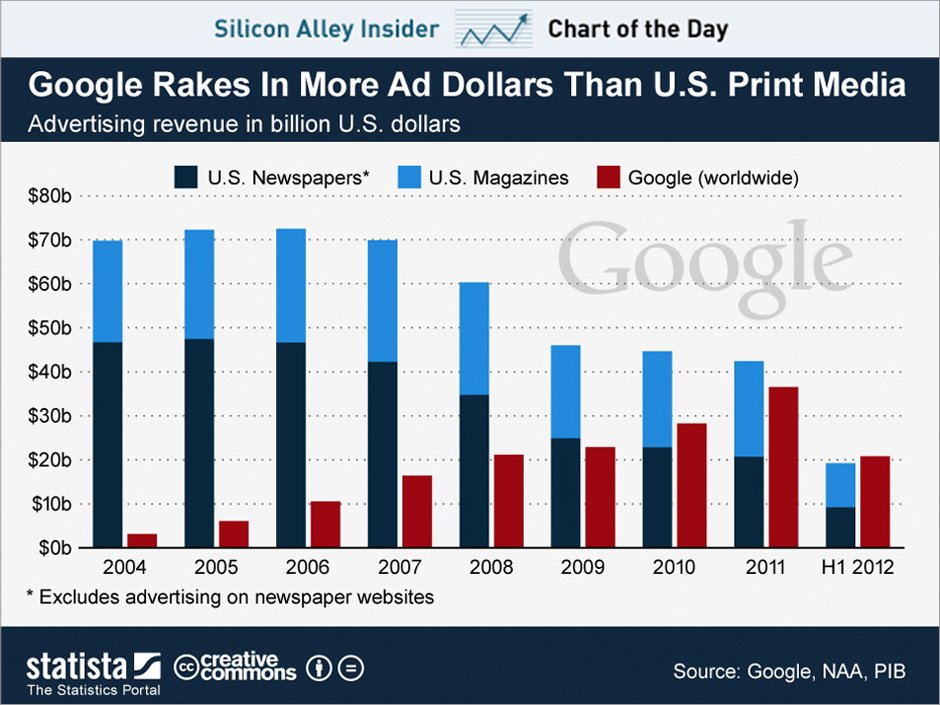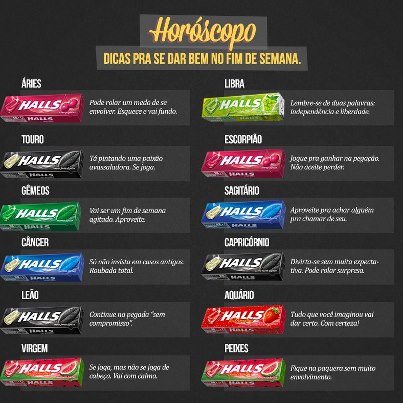Facebook Business Model
Display Ads
User experience (Goundswell; Advertising, frequency, repetition)
Not effective in Mobile space
Lack of purchasing intent; social media
Targeting large end of the marketing funnel - Awareness
$1 Billion advertising revenues
1 Billion Users continue to divulge personal information?
Charging companies to access facebook fans; not the original agreement
Re-targeting cookies (similar to search) Charge higher advertising fees
Aggregate personnel data; Graph search
Monetize WOM (Marketing/Sales Holy Grail)
Facebook phone? Erickson, RIM?
Google Business Model
Key word advertising; pay per click; Overture
Core Product search and purchasing intent; no need to stoke demand; simply harvest it
Relevancy and popularity (page rank) via click through; objective search
User controls ad experience
400MM Google+ users
Google streamlines the matching process
Google pulls information out of Google+ for advertising purposes (scroogled)
Street view and European concerns
Motorola acquisition
The conflict between the imperative to grow profits and the temptation to mine data in social media servers will inevitably collide with the Public and Government demands for privacy protection.
Privacy issues, Trends;
Privacy legislation and Regulatory Actions
Social Media Online Protection Act (2012 HR 5050)
Password Protection Act (2012 S. 3074)
The Location Privacy Protection Act of 2012 (S.1233)
European Commission investigation into Google's Youtube search history policies. The Commission is pushing for 1) Users are informed of data sharing 2) Users have a simple option to opt out.
Facebook; Subject to 20 years of privacy audits; Sharing personal data; Nov/11 FTC
California, Illinois, Maryland and Michigan Social Media Privacy Laws
Forcing candidates to disclose social media passwords is illegal. Except for Investigatory purposes.
National Labor Relations Board – Firing employees based on Facebook posts
Kimberly Swan fired because she posted that her job was boring
Hispanic United of Buffalo VS Rivera; Firing employees engaged in “concerted activity” for “mutual aid” is illegal.
Arizona Daily Star reporter offensive posts
Privacy Litigation
Phonedog vs. Noah Kravitz
Who owns a business Twitter account? Phonedog_Noah. 17K followers, $340K or $2.50 per follower per month
Fraley VS Facebook; Right of Publicity – Facebook Case (Commercial appropriation of Likeness); Facebooks Sponsored Stories feature violated California law by publicizing users' "likes" of certain advertisers without paying them or giving them a way to opt out.
Price VS Stossel; Altering videos on a blog; Defamation, Libel
Occupy New York protestor subpoenaed tweets legal
Reputation.com
Consolidation accelerate issues as privacy policies merge; Facebook/Instagram, Twitter/Tweetdeck, Google/Wildfire
Hackers; Burger King and McDonalds
Identity Theft; birth date, picture, location
http://cdixon.org/2012/05/15/facebooks-business-model/
Groundswell: Wining in a World Transformed by Social Technologies (2008)
http://cdixon.org/2012/05/15/facebooks-business-model/
http://readwrite.com/2012/11/14/facebook-has-a-business-model-problem
http://www.businessinsider.com/facebook-fbx-2012-9?goback=.gmp_51825.gde_51825_member_169796959
http://articles.economictimes.indiatimes.com/2013-01-19/news/36432162_1_social-search-facebook-data-friends-search
http://www.aclu.org/blog/technology-and-liberty/california-social-media-privacy-laws-give-students-employees-online
http://www.nytimes.com/2011/11/30/technology/facebook-agrees-to-ftc-settlement-on-privacy.html
http://www.nytimes.com/2011/12/26/technology/lawsuit-may-determine-who-owns-a-twitter-account.html?_r=0
http://www.reputation.com/reputationwatch/articles/top-five-social-media-privacy-concerns
http://www.businessweek.com/news/2011-12-21/facebook-lawsuit-against-ads-given-go-ahead-by-u-s-judge.html
http://www.nytimes.com/2013/01/22/technology/employers-social-media-policies-come-under-regulatory-scrutiny.html?pagewanted=all
http://www.nytimes.com/2013/02/25/technology/twitter-hacks-force-companies-to-confront-security-on-social-media.html?pagewanted=all
http://variety.com/2011/biz/news/price-and-abc-settle-after-four-years-1118035786/
http://blogs.wsj.com/tech-europe/2013/04/04/google-versus-the-eu/


































